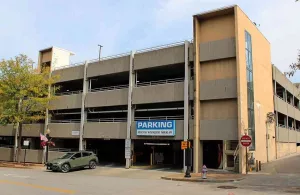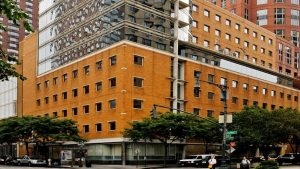Auke Bay work prepares for underwater demolitions next year
Published by John on
Wonder no more.
The dredging of the inner basin of Don D. Statter Memorial Boat Harbor is the first part of a 3-year, $12 million dollar project by City and Borough of Juneau Docks and Harbors to optimize the harbor for whale watching tours, including a new float, a retaining wall, a bathroom and a more efficient arrangement for busses dropping off and picking up people.
“This winter, the dredging is taking place to make it deep enough to install pilings,” said City and Borough of Juneau Docks and Harbors port engineer Erich Schaal in a phone interview. “This isn’t going to provide 100% of the fleet’s moorage needs, but it will reduce the stress on the existing facilities. It’s hard to say exactly because of the way the whale watching fleet changes. We hope this float will be used by most of the fleet.”
Pacific Pile and Marine is the primary contractor on the project, that, beginning in February, will involve using explosives to clear an underwater knuckle of bedrock that would create a navigation hazard.
“We’ve never done any underwater blasting before,” Schaal said.
After building a causeway out to the knob, contractors will bore into the knob and set their charges. Schaal said the demolition itself is likely to be anticlimactic since the charges will be underwater and suppressed by shotrock.
“The second phase is going to be to blast that knob out,” Schaal said. “We’re working with the blasting team to feel their sense of the need to move their vessels. We’ll be asking people to leave to their vessels.”
The work will dredge the harbor down to 16 feet below sea level, Schaal said. Because Auke Bay gets low tides as low as five feet lower than that average, boat traffic will still have 11 feet to work with for maneuvering in the inner harbor. The floor of Auke Bay rapidly descends, reaching more than 100 feet below the surface by the end of the floats at the end of the floats, which are also on Docks and Harbors’ long term plan for replacement.
“We have a master plan with the ACOE to expand the harbor with more floats out there as needed,” Schaal said. “The floats are approaching the end of their useful life so we’re trying to accelerate our partners into helping us replace it.”
Schaal also said that provision has been made for protection of all marine mammals, including seals and sea lions, during the dredging, blasting, and subsequent construction. Marine mammals are monitored during the project and if they get too close, the work is suspended. While normally the contractors are on the hook for either providing observers or hiring consultants, Schaal said Docks and Harbors was able to arrange a more elegant sol
“We’ve decided to leverage our local talent with our whale watching specialists,” Schaal said. “They’re basically continuing their love of monitoring marine mammals from the summer into the winter.”
Animals within about 425 feet of the dredging are monitored, Schaal said, and the activity recorded for the National Marine Fisheries Service to compile. If a mammal gets within about 30 feet, work is halted while the animal is in the no-go zone. For the blasting, the cordon will be much wider.
The pile of fill, taken from nearby Stabler Quarry, will remain in the parking lot over the summer, Schaal said, somewhat constricting trailer parking.
With the dock in place, construction on the retaining wall will start next autumn, and it is expected to be completed in spring 2021. The bathrooms and bus onload-offload area will be completed by 2022, Schaal said.




